Energy Efficiency:
What It Is And How To Be More Energy-Efficient
In this article, you will learn everything you need to know about what energy efficiency is, and how to be more energy efficient!
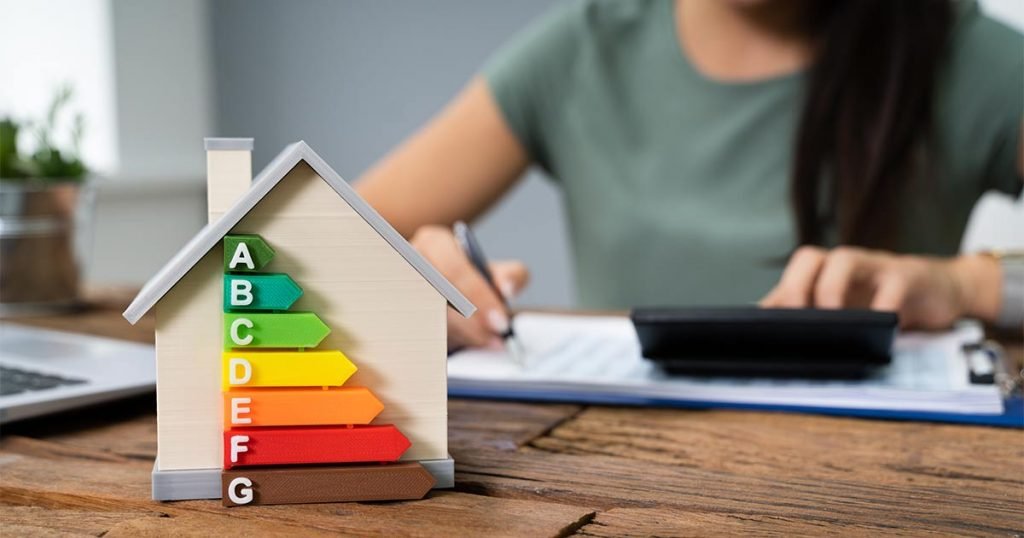
Sustainability is one of the most consistently discussed topics over the last decade and during those discussions, you’ve probably heard the term energy efficiency thrown around. What does this mean? You’ll find this out and more by reading our guide to achieving energy efficiency.
Through the course of this guide, we’ve covered the following questions you may have:
- What is energy efficiency?
- Why is energy efficiency important?
- What is an energy rating?
- How can I be more energy efficient?
- What’s the difference between energy efficiency and conservation?
As we answer each of these questions, we have also made use of reference materials. Whether that’s a supporting guide, relevant statistics, or evidence to any claims made, you can be sure you’re receiving accurate information. They also allow you to read deeper into energy efficiency and sustainability if you want to learn even more.
To explain energy efficiency, we first need to discuss what it is.
What Is Energy Efficiency?
 We can break the term energy efficiency into two different components. Energy tends to be used as a ubiquitous word for different types of power but in this case, we mean energy that’s derived from electricity. This can be from green sources, like hydroelectricity, solar, or wind, but it’s usually framed in the context of burning fossil fuels to acquire that energy.
We can break the term energy efficiency into two different components. Energy tends to be used as a ubiquitous word for different types of power but in this case, we mean energy that’s derived from electricity. This can be from green sources, like hydroelectricity, solar, or wind, but it’s usually framed in the context of burning fossil fuels to acquire that energy.
As for efficiency, that simply means minimizing waste as much as possible. To do something efficiently is to do it fast, effortlessly, and to completion so that nothing is wasted. A simple and universal example of energy efficiency is switching a light off when you’re not in the room. Leaving that light on is wasting energy, which in turn wastes the resources used to generate that power and the money you spend paying for that power that isn’t used. We get into the benefits of energy efficiency below, so check out that section if you’re wondering how energy efficiency can make your life easier.
Sticking with the light example, the type of lightbulb you use can dictate how much energy is wasted too. There has been a huge push over the last two decades to transition from incandescent bulbs to LED alternatives, so there’s every chance you’ve got LED light bulbs in your home right now. LEDs offer a whiter, “cleaner” light as opposed to warm incandescent light. They also use 90% of their energy on light production while incandescent bulbs spend 90% of their energy input on heat.
Just like with lightbulbs, many electronics and appliances have strived for energy efficiency over the past years. Without necessarily knowing it, you’ve also taken part in this push by buying the newer, more efficient models of kitchen appliances or televisions. As we continue, you’ll find out how that efficiency benefits you and the environment.
Why is Energy Efficiency Important?
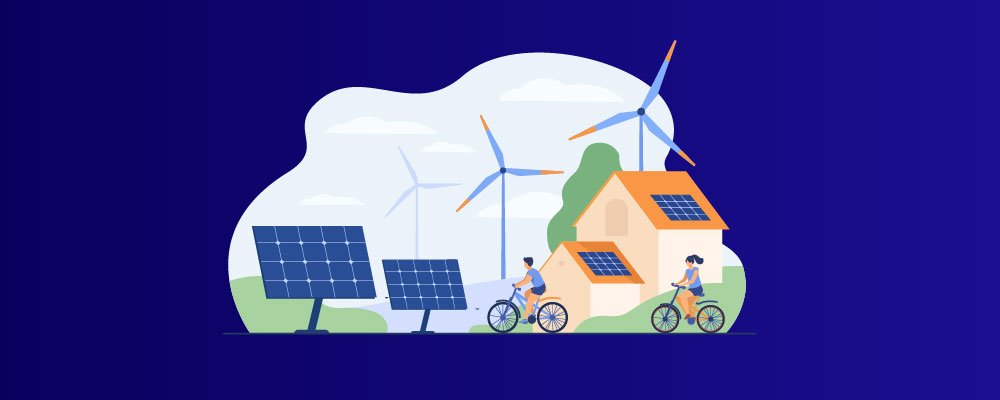 Now that we know what energy efficiency is, why is it important? The main answer is that it makes practical sense. We’ve delved deeper into the two main reasons you should consider energy efficiency below, those being environmental awareness and reduced operating costs.
Now that we know what energy efficiency is, why is it important? The main answer is that it makes practical sense. We’ve delved deeper into the two main reasons you should consider energy efficiency below, those being environmental awareness and reduced operating costs.
However, even if you don’t believe in environmental activism or you have all the money in the world, it’s generally held as a positive to be efficient for efficiency’s sake. There’s no need to purposefully lack efficiency when running your home, so instead of asking why you should be efficient, try asking “why not?”
With that said, let us explain how energy efficiency is better for your environment and your wallet.
How Is Energy Efficiency Good For The Environment
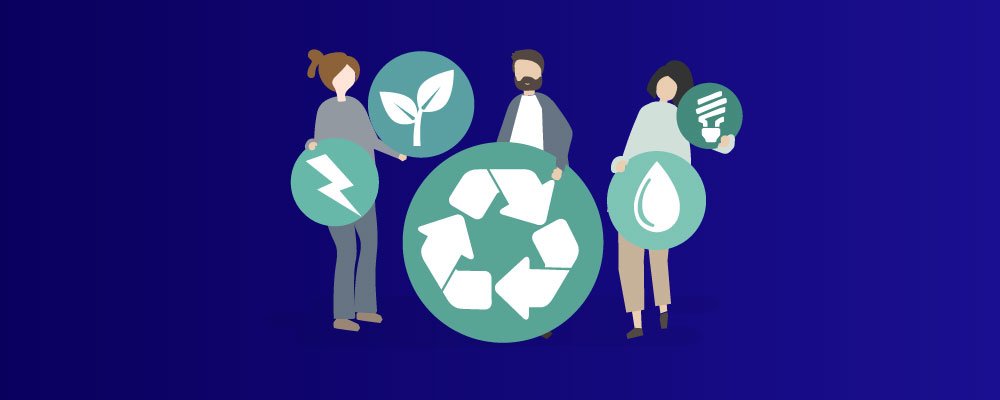 Perhaps the more obvious and widely marketed benefit of energy efficiency, you have likely heard that it’s great for the environment. Energy efficiency and sustainability go together. Why? Because by burning fossil fuels to generate electricity, carbon emissions are created and sent into the atmosphere. Increased carbon content in the atmosphere, mainly in the form of CO2, is widely accepted to be responsible for man-made climate change.
Perhaps the more obvious and widely marketed benefit of energy efficiency, you have likely heard that it’s great for the environment. Energy efficiency and sustainability go together. Why? Because by burning fossil fuels to generate electricity, carbon emissions are created and sent into the atmosphere. Increased carbon content in the atmosphere, mainly in the form of CO2, is widely accepted to be responsible for man-made climate change.
By being energy efficient, you cut down on your carbon footprint. When everybody does that, the cumulative carbon footprint of the entire planet is lessened, reducing CO2 emissions, and helping the environment heal. This keeps the environment functional so that future generations can enjoy the safety and biodiversity that come with a stable climate.
As we mentioned above, there are two ways that energy efficiency is being achieved on a large scale. First, individuals reduce their own energy consumption so less “dirty” energy is created and used, and so incentivized by power companies. Second, the source of energy itself is changed to “clean” energy. Though the technology required is in its adolescence, it is hoped that we can use solar, wind, hydroelectric and tidal power to replace fossil fuels as a source of energy. Without fossil fuels, no carbon is emitted, causing no environmental damage.
Why Energy Efficiency Is Beneficial For The Global Economy
 It’s human nature to operate by incentive. While many groundbreaking developments have occurred over the last few centuries, they live or die on whether they can be mainstreamed. The adoption of new technologies and behaviors often hinge on how beneficial they can be for the individual person. Though you may feel you’re a charitable soul, others may not be, and it’s only natural that people won’t inconvenience themselves to the benefit of a long-term goal that ultimately won’t affect them.
It’s human nature to operate by incentive. While many groundbreaking developments have occurred over the last few centuries, they live or die on whether they can be mainstreamed. The adoption of new technologies and behaviors often hinge on how beneficial they can be for the individual person. Though you may feel you’re a charitable soul, others may not be, and it’s only natural that people won’t inconvenience themselves to the benefit of a long-term goal that ultimately won’t affect them.
Therefore, environmental activism must make the environmentally friendly alternative affordable and convenient to the average person. Fortunately, our global economy’s dependence on fossil fuels has consistently increased over the decades, driving up oil and gasoline prices. If you’re one of our older readers, you’ll even personally remember how cheap gas prices used to be and how they have fluctuated in recent years. If not, check this chart out.
This dependency is bad, of course, as covered above. However, it does make environmental products and services much more attractive since they can be presented at lower price points than the greedy fossil fuel industries. Green, sustainable energy sources are also hedged against price increases since the sun, the wind, and the sea aren’t finite resources (when it comes to our resource consumption, at least).
Next time you’re looking for new tech for your home, check out the more energy-efficient options. You may be surprised that they’re cheaper than classic models. That said, try to stay away from brands since recognizable names also come with a recognizable price markup, and that includes the energy-efficient products from those brands too.
What Is An Energy Rating?
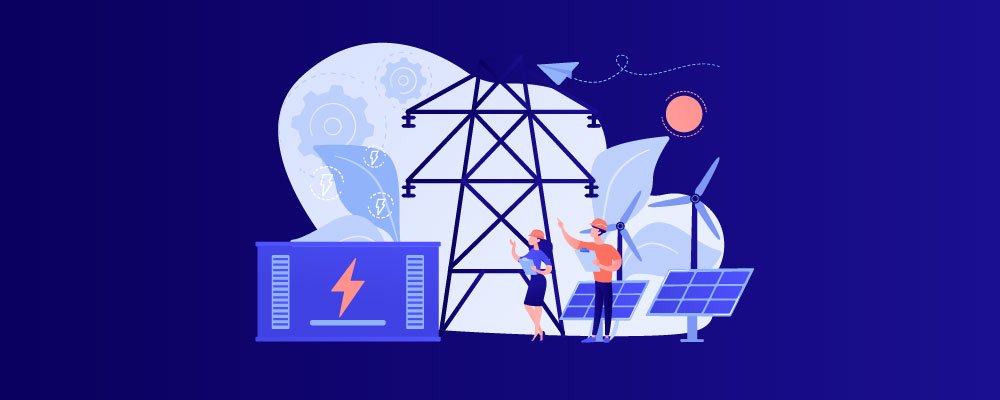 We’ve covered some pretty big topics so far, so you may be wondering how you can figure out when an appliance or some electronic equipment is more energy-efficient than others. This is achieved via energy ratings. You may not have noticed, but you can find energy ratings on nearly every appliance nowadays. They’re often color-coded and/or rated alphabetically like so:
We’ve covered some pretty big topics so far, so you may be wondering how you can figure out when an appliance or some electronic equipment is more energy-efficient than others. This is achieved via energy ratings. You may not have noticed, but you can find energy ratings on nearly every appliance nowadays. They’re often color-coded and/or rated alphabetically like so:
- A+++, a deep green
- A++, a standard green
- A+, a lighter green
- A, a yellow color
- B, a lighter orange
- C, a deeper orange
- D, E, F, and G are red and inefficient
The specific layout of your chart may differ depending on where you are in the world, or even your country. Sometimes the triple + is better represented by an asterisk, sometimes not. Fortunately, through color-coding, you always know which ratings are best regardless of layout or language. Efficiency is directly correlative to reduced waste and running costs, so it helps achieve the benefits detailed above.
Of course, larger certificates attached to products may even detail how much power you can expect to save and how much that is in dollars and cents. In those cases, you should make sure the certificate is from a credible organization and not some marketing scheme.
We even have energy ratings for windows, too. We discuss insulation and weatherization later but, for now, know that windows play an important role in temperature and light regulation in the home. Windows that keep more heat in while allowing for light transmission are more efficient. These certificates may look slightly different, for example:
- A*, bright blue
- A+, blue
- A, green
- B, light green
- C, light orange
- D, dark orange
- E, red
The principle is still the same, buy products closer to the top if you want to be as energy-efficient as possible. Speaking of becoming more energy-efficient, we have details on how you can do just that below!
How Can You Be More Energy Efficient
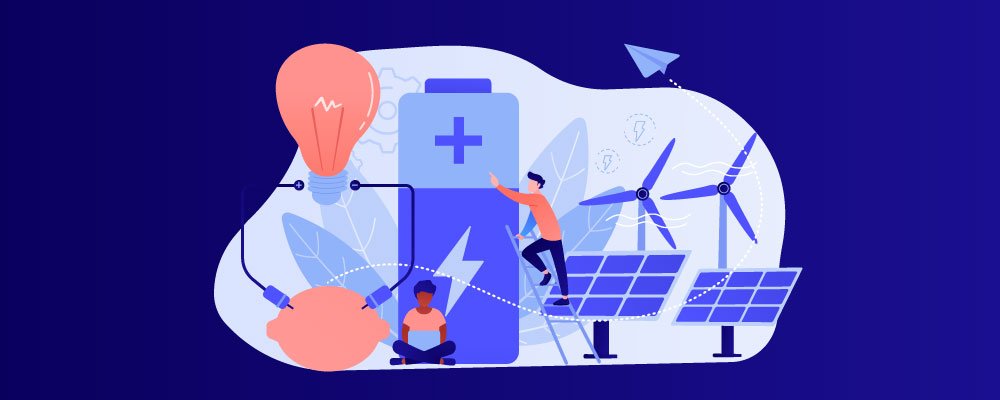 Knowing the ins and outs of energy efficiency is great, but it’s ultimately useful if you don’t know the ways you can put this knowledge into practice. There are a lot of things you can do to make your life more energy-efficient, so check out our exhaustive sections below.
Knowing the ins and outs of energy efficiency is great, but it’s ultimately useful if you don’t know the ways you can put this knowledge into practice. There are a lot of things you can do to make your life more energy-efficient, so check out our exhaustive sections below.
Before you do anything to change your lifestyle, first check that any electrical equipment you use is as efficient as possible. If not, don’t bankrupt yourself by swapping over to sustainable alternatives all at once. It’s better to slowly transition your electronics to be more efficient than trying to do it all at once.
With that said, let’s take a look at what you can do in the meantime.
Adjust Your Day-To-Day Behaviors
Use less electricity. This is simply one of the most reliable ways of becoming more energy efficient but it’s also a drastic one for many reasons. We rely on technology that runs off of electricity, especially now that our workspaces and economies are increasingly based around the Internet and access to computers and smartphones. It’s unreasonable to expect anybody to cut electricity out of their life completely.
Our example of turning off light bulbs is relevant here. Take that attitude towards every appliance you own. If you’re not actively using it, why keep it activated? You may have been taught to stop faucets from running while brushing your teeth as it wastes water, and this is the same concept applied to electricity. Make sure you turn certain electronics off at the wall too, so you don’t use residual power while they’re on standby.
Sometimes this can involve manual labor on your part. For example, washing your dishes by hand instead of using a dishwasher is great for cutting electricity uses, and the electricity costs with it. Hang-drying clothes is another method that many still practice because dryers can be expensive to keep and run. Want another? Turning your air conditioner off when you don’t need it saves electricity.
Use Smart Power Strips
We mentioned that you should turn off electronics at the wall so that power isn’t wasted. This wasted power is referred to as “phantom loads” which is where residual power is used passively while the objects aren’t in use. You’d be surprised how much power can get wasted when a piece of electronic equipment is left on standby all year round.
The solution? Smart power strips. Sometimes they’re called advanced power strips but it’s all the same idea, they make sure electronics shut off completely when not in use. That way you can stop phantom loads without having to turn electronics off at the wall. They’re also programmable, so they can turn off at set times or after nobody has interacted with the device.
Install A Programmable Or Smart Thermostat
Another programmable gadget that’s great for monitoring and changing your power consumption is a smart thermostat. These have become popular too over the last decade since they can help people minimize electricity costs. Many come with a smart meter that allows you to track your energy usage to cut it down.
A smart thermostat can control your home’s heating and air conditioning systems to stabilize your home temperature. You can program a schedule into them so that it warms the home during certain hours and cools the home during others, and you should use these powers with the express purpose of cutting down your energy usage.
If you have other smart products that can be linked to a smart meter or thermostat, you can turn them into your entire home’s energy-saving control panel.
Purchase Energy-Efficient Appliances
You can tackle domestic energy efficiency at the source by purchasing appliances that have been made with energy efficiency in mind. When buying appliances, you need to check two numbers that are tied to the product. The first one is simple enough, the purchase price. In your attempts at energy efficiency, you shouldn’t put yourself in a financially uncomfortable situation. Secondly, some retailers will let you know the estimated annual operating cost. These can help you find which models are more energy efficient.
A lot of the time, these energy-efficient appliances will cost more to purchase than non-efficient alternatives. This is how manufacturers and suppliers justify selling energy-efficient products on the market. They’ll save you more money in the long run but you’ll be expected to spend more upfront on an energy-saving appliance.
Energy Star labels are a great indicator of when an appliance is energy efficient, too. Here’s a directory of Energy Star products that you can check out.
Reduce Your Water Heating Expenses
Like with electricity, you’ll also want to reduce your use of hot water. They both require energy to function and so, by limiting hot water usage, you limit your consumption. You can do four things to limit how much hot water you use:
- Purchase an energy-efficient water heater.
- Insulate your water heater and the first six feet of interconnected pipes.
- Use a thermostat to turn the water heater down.
- Use less hot water.
Install Energy Efficient Windows
As we mentioned above, windows are an important part of your household’s heat management. It has long been known that sturdy, robust double-pane windows conserve more heat than their one-pane counterparts.
How much energy they save will depend on how cold your climate is and how much you run the heating on at home. If your local climate is even more extreme, you can get storm windows that are designed to protect pre-installed windows from high wind speeds and other damaging weathers. Warm climates, on the other hand, may cause homes to gain heat through their windows. This can be fought using low-E coatings in your windows. These bar UV and IR light while still allowing the visible light spectrum through.
Upgrade Your HVAC System
If you’re fortunate to have a home with an all-in-one HVAC system, you’ll be glad to know that there are ways to make these energy-efficient too.
For an HVAC heating system, you’ll want to upgrade every part of it. This means you need to get an Energy Star certified gas furnace. Note that Energy Star certification varies between the north and the south U.S. when it comes to heating, as the north is colder.
The next part of an HVAC system is ventilation. These combine the different parts of a system to deliver warm or cool air throughout your house and, when trying to be energy efficient, they should be fully sealed and insulated.
As for air conditioning, an Energy Star certified central air conditioning unit can help your AC save power and money by doing so. If you have a modern heating system, the air conditioning will be built into it. This means you’ll have to buy the AC replacement at the same time as the furnace to make sure it’s compatible and as efficient as possible.
Weatherize Your Home
Weatherizing your home is where you ensure there are no air leaks in the structure. This keeps heating expenses down since that valuable heat doesn’t escape into the outside world. Common air leak sources are windows, as we’ve discussed, vents, and doors. Tackle each of these components and choose the most secure and energy-efficient alternatives to adequately weatherize your home.
Sometimes, you can patch up air leaks using caulk. This is much cheaper than buying new components altogether but it can’t be used on objects that move during their function, like doors and windows. For that, you can try weather stripping instead.
Air can also leak upwards and into your attic, so try to have sufficient insulation up there. Speaking of insulation…
Insulate Your Home
Weatherization and insulation often go hand in hand as they both deal with maintaining the interior environment of your home. If you need to fully insulate your home, the R-value will interest you. This is the recommended heat resistance level that homes in your region can handle. The warmer the climate, the lower you can expect this R-value will be.
Your required insulation solution will depend on the size of your house and whether there are additional parts to insulate like attics, basements, and crawl spaces. These are three of the five main structural features that absolutely should be insulated in your home. Here are all five:
- Walls
- Floors
- Attics
- Basements
- Crawlspaces
If you’re unsure of where to start with your home insulation, the Department of Energy has you covered.
Other Easier Ways To Be More Energy Efficient
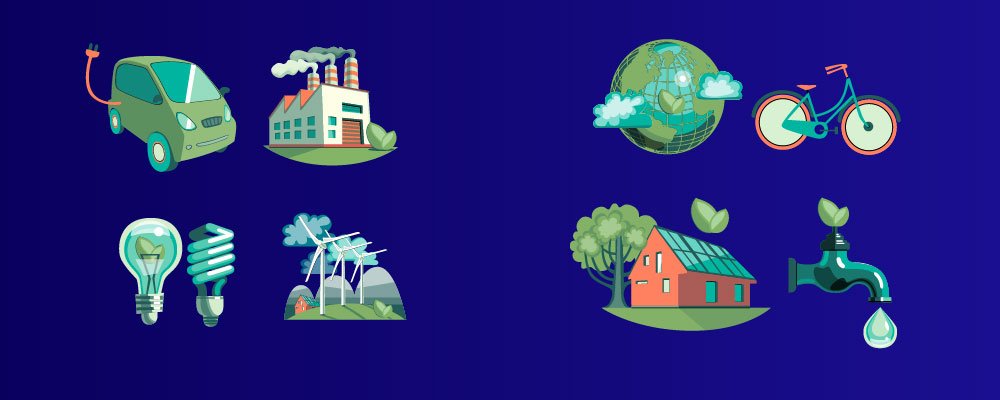 We’ve covered most of the main steps you can take towards energy efficiency. Here are some of the lifestyle decisions we make every day that can be improved when looking at them through energy efficiency glasses.
We’ve covered most of the main steps you can take towards energy efficiency. Here are some of the lifestyle decisions we make every day that can be improved when looking at them through energy efficiency glasses.
Defrost Your Refrigerator and Freezer
We’ve all had a freezer that builds an ice wall along the walls of its cold compartments. While it may only irritate you when removing food items is made more difficult by the ice wall, you should help your wallet and your cortisol levels by defrosting your freezer. Do it for your refrigerator if necessary, too.
It’s best to do this before you shop so that they’re both as empty as possible. Wait for the ice wall to melt and use an ice pick or a similar item to knock the buildup away if you’re able. You should look at defrosting your cold appliances if they have a ¼ inch thick or thicker ice buildup.
Set Your Refrigerator Temperature
Similarly, you can make your refrigerator more energy efficient during operation by setting its temperature. Many of us set up refrigerators and ignore the settings. If it’s cold, it’s good enough, right? Not if you want to be energy efficient.
You should set the temperature anyway so that it’s in line with the handbook or instruction manual that came with the appliance. This stops you from wasting energy by cooling the compartments inside too much, and it also stops ice walls from developing as much.
Also, both refrigerators and freezers work best when they’re full. This means you can keep them both stocked so that they run most efficiently. If you prefer to get your three liters a day, you can use water bottles as placeholders to keep cold compartments full, or you can use any other similar objects. Don’t overflow the appliances as this will have the opposite of the intended effect.
During Warmer Months, Close Blinds, Shades, and Drapes
A surefire way to control the interior temperatures of your home is to use window awnings to keep the heat out. Whether that’s curtains, shades, or blinds, they work best when they’re thicker and made of durable material. Light-eliminating blackout curtains are great for this job but they can get expensive for the average person. Open these curtains if you want the opposite, cooling effect of your windows.
Use Natural Light
Also concerning windows, you should consider window placement and how the sunlight travels through your home at day. If your house has enough windows and a more open layout, you can get away with having no electric lighting on as the sunlight will provide visibility for you.
Don’t Leave Your Electronics On All Day Long
This one is simple, if you’re not using electronics then don’t keep them on. PCs are some of the biggest culprits when it comes to leaving electronics on. To maintain energy efficiency, you should turn everything off when not in use. It’s also better for the computer and other electronics to be turned off properly.
Use a Ceiling Fan
With interior temperature, you can cool your home by using ceiling fans. You’ll find these sold independently or built into ceiling lights to save space. By cooling your home, you can save energy on heating.
Turn Off The Lights
Reiterating, you should also turn off the lights whenever they’re not being used. If somebody isn’t in the room and visibility isn’t important to that room’s function, you should consider turning the lights off to save power and money.
Turn Off The Oven
You should also turn off the oven to save some energy. There are some unconventional ways of doing this, like turning it off a few minutes before your dinner is cooked. You should also make sure it’s never on standby mode and is properly turned off at the wall.
Dress For The Weather
Last but certainly not least, you can also effortlessly save cash from expensive heating bills by covering yourself up. Dressing for your climate is great for preserving energy as it eliminates any need for energy-efficient appliances.
For example, if you have a large coat, you’re warmer than you’d usually be. In that case, there’s no need to turn your heating system on. Conversely, you should take off clothes to feel cooler and more sustained when out in a hot climate.
Energy Efficiency VS Energy Conservation
 You may have seen the term energy conservation used in place of energy efficiency. They’re closely interrelated concepts that have both been discussed above. As we bring our guide to a close, we’ll explain the technical difference between the two ideas. Let’s go through them so you can identify each going forward.
You may have seen the term energy conservation used in place of energy efficiency. They’re closely interrelated concepts that have both been discussed above. As we bring our guide to a close, we’ll explain the technical difference between the two ideas. Let’s go through them so you can identify each going forward.
Both of them are related in that they don’t waste resources and so they have less of an impact on the environment, which is often the motivation too.
The general rule is that energy efficiency applies to technology and the use of specialized gear. Going back to our very first example, swapping an incandescent lightbulb for an LED variant that uses less energy is practicing energy efficiency.
Energy conservation, on the other hand, is more about your lifestyle and behaviors. Using our lightbulb example again, this is where you’d turn the light off when not in the room. If you’re taking your appliances off of standby, you’re practicing energy conservation over energy efficiency.
Summary
With that last clarification, we have covered everything that a casual reader should know about energy efficiency and conservation. Throughout this guide, we’ve explained what energy efficiency is and why it’s important for the planet and your financial health.
Then we turned to practical advice on how to achieve energy efficiency. We described energy ratings and how they are used to designate which appliances and electronics are energy efficient. After that, we’ve given you nineteen separate ways that you can change your home to conserve power and become energy efficient. There’s a lot of different methods, so check back with the guide as you make changes to make sure you didn’t miss anything.
This should be all the information you need to change your home and make it more environmentally friendly. What’s more, you save money by saving energy too, so it’s just the practical solution for those who want to save more of their hard-earned cash when the bills go out.
